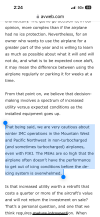SilencewOw
Filing Flight Plan
- Joined
- Feb 18, 2024
- Messages
- 15
- Display Name
Display name:
SilencewOw
Hello guys. I’ve read several threads at this forum so decided to register and ask advice for myself. That’s regarding the future plane pick.
My name is Mike, I’m from Southern California. I’m only about to start my PPL, but I was thinking before the start - to identify the airplane I will aim after getting my PPL and instrument rating. If I know it will be some Piper - I will go and start learning on Piper, if that will be Cessna then I will study on Cessna. First of all does this logic even make any sense or even if I will aim to get some Piper after getting the license studying on Cessna is absolutely not a problem?
The hardest task I want to be able to accomplish with my future airplane- is to be able to get 4 people including myself for a ski trips to Utah and Colorado.
Based on what I expect it will be approximately 900-1000lb of weight and the distance from the airport I’m planning to base (Long Beach Airport (LGB)) to Salt Lake City 511Nm and to Aspen is 635nm
I read at this forum that Aspen is a very tricky airport to land and I will consider any reasonable alternative to keep the safety as a number one priority. Couldn’t find any info on how difficult Salt Lake City is.
I’m planning to share the plane with my friend and we have a budget around $300k. If that’s not enough to get something safe for the above mentioned task we will save more
Any advices or comments would be greatly appreciated. Thank you!
My name is Mike, I’m from Southern California. I’m only about to start my PPL, but I was thinking before the start - to identify the airplane I will aim after getting my PPL and instrument rating. If I know it will be some Piper - I will go and start learning on Piper, if that will be Cessna then I will study on Cessna. First of all does this logic even make any sense or even if I will aim to get some Piper after getting the license studying on Cessna is absolutely not a problem?
The hardest task I want to be able to accomplish with my future airplane- is to be able to get 4 people including myself for a ski trips to Utah and Colorado.
Based on what I expect it will be approximately 900-1000lb of weight and the distance from the airport I’m planning to base (Long Beach Airport (LGB)) to Salt Lake City 511Nm and to Aspen is 635nm
I read at this forum that Aspen is a very tricky airport to land and I will consider any reasonable alternative to keep the safety as a number one priority. Couldn’t find any info on how difficult Salt Lake City is.
I’m planning to share the plane with my friend and we have a budget around $300k. If that’s not enough to get something safe for the above mentioned task we will save more
Any advices or comments would be greatly appreciated. Thank you!


